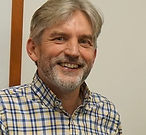Healthy Churches
- Ian Duncum

- Sep 13, 2019
- 2 min read

A conversation that I have been having with a number of people is "what does a healthy church look like?" This is not an exhaustive list, but it arises out of the common themes I see emerging from consulting with churches over twenty years. There are several good assessment tools for churches that are useful in discerning health or vitality indicators. I acknowledge there will be nuances for various sizes of churches and different types of churches - this is a broad, quick checklist to provoke further reflection and discussion.
1. Vision
We have a reasonably specific, measurable picture of God’s future for our church which we have discerned prayerfully, discussed and agreed on as a church.
2. Fruitfulness
This is about multiplying ministry. We have people (other than the pastor) involved in equipping and training others.
3. Leadership
Involves governance/spiritual discernment, ministry co-ordination, and equipping (Eph 4:11-13). Different groups will carry out each of these parts (and operate differently) in different sized churches, and trust between pastor and the peak Leadership group is key.
4. Local Community
We are responding to the needs of our local community through relevant programs, and through partnering with other churches and like-minded agencies.
5. Compliance
We have policies and procedures in place to be compliant with all state and federal laws.
6. Change
There is a peak group responsible for change (really, all churches need this whether more or less, as ministry contexts are constantly evolving) and there is a process for both change and monitoring how people are processing it.
7. Reviews
We have an external review of our church’s ministry every 3 years, and regular conversations around leadership and pastoral effectiveness that are formative rather than merely evaluative.
8. Small groups
We have relationship-based gatherings that reflect the five purposes of the church with coherent oversight that equips leaders and multiplies groups.
9. Conflict
We normalise conflict and teach about it often. We have several conflict policies in place that are enacted/modeled by Leadership.
10. Burnout
a. We encourage our pastor to take regular holidays and limit Leadership/Eldership to one or two terms.
A fuller version of this checklist is available here.
Please contribute to the conversation with anything you feel should be added to this list.
© 2019 Ian Duncum. All rights reserved. No reproduction without written permission.
Rev Dr Ian Duncum is an author (The Impact of Church Consultancy is available here https://www.ianduncum.com.au/shop), and a consultant with 20 years experience of working with non-profit enterprises and churches across a number of denominations. This has included denominational leadership in church health and development and research positions. Ian also trains church consultants, facilitates training for ministers and leaders, and provides mentoring and supervision for pastors and other leaders. He can be contacted through www.ianduncum.com.au or duncum@internode.on.net









Comments